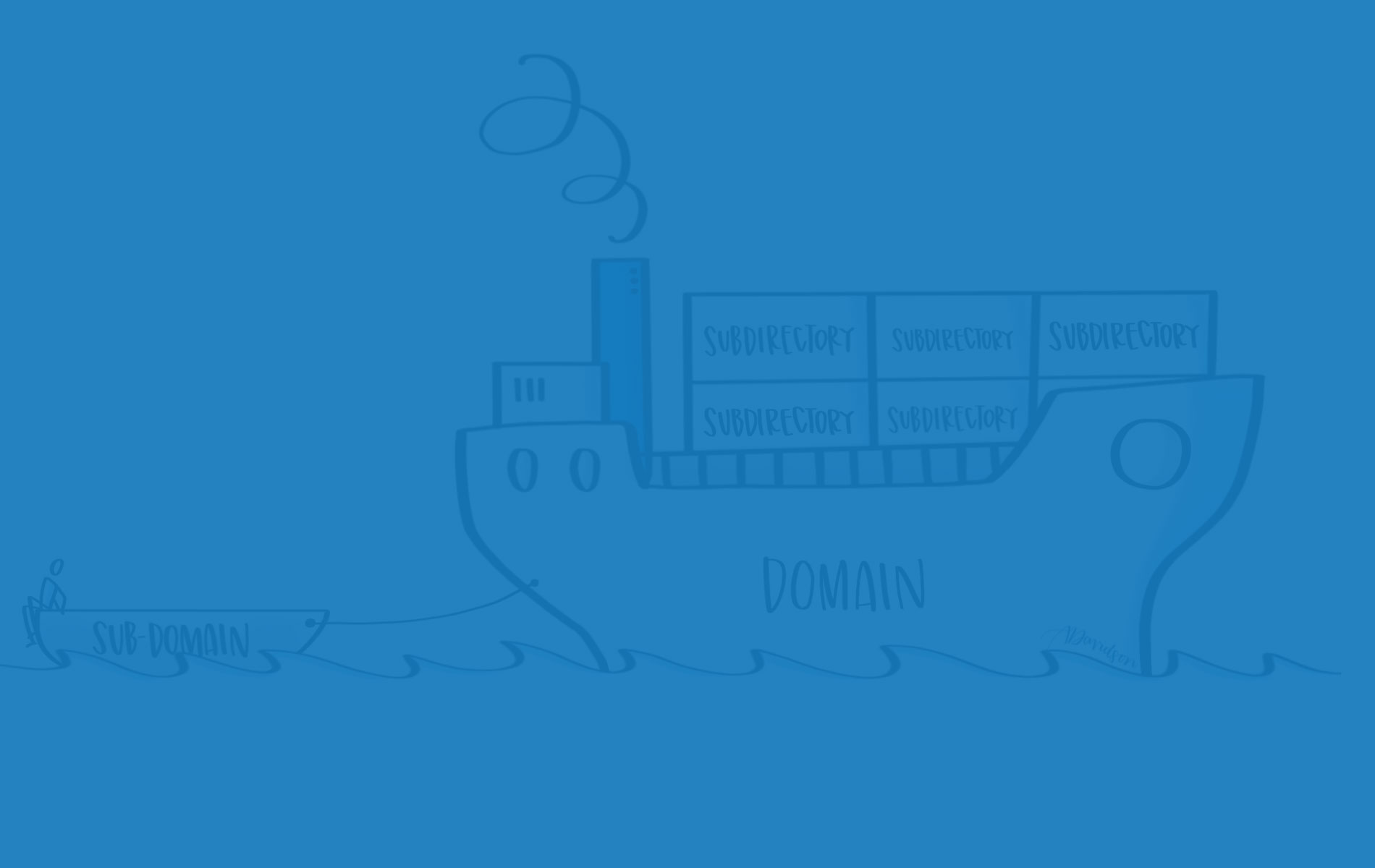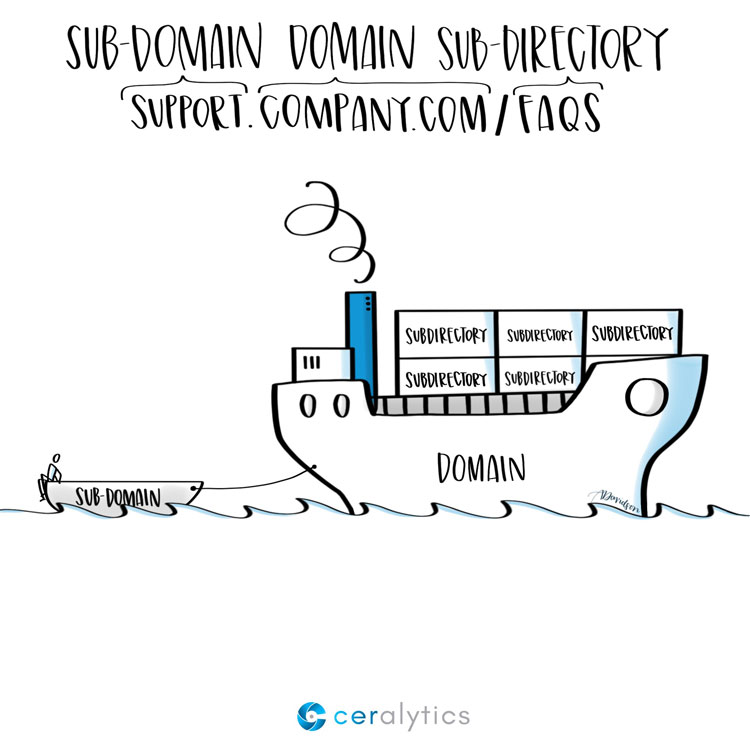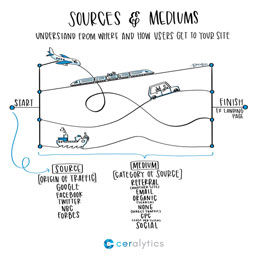Why should I care about URL structures?
You can accidentally create havoc on your digital marketing strategy if you don’t understand the importance of URL structures like domains, subdomains, and subdirectories.
For example: let’s say you want to create a new blog or microsite for your company. Which option below will be the most effective at giving your new site a leg up in terms of SEO?
- blog.mysite.com
- mynewblog.com
- mysite.com/blog
If you don’t know the answer to this, read on. If you do know the answer to this, also read on, because there may be more to it than you think.
We interrupt this post for a quick SEO tutorial
As we covered a few weeks back, inbound links into a website play a key role in the overall trust search engines have for a website. The more trusted inbound links a site has, the more trusted it is, and the more likely its pages are to rank highly in search engines.
These inbound links play a HUGE part in determining whether a new blog or microsite should be created as a subdomain, its own domain, or a subdirectory.
TLDs, subdomains, and subdirectories
Your top level domain (TLD) is the big cargo ship that carries the content of your entire website. (We’ll just refer to it as your domain from here on out.)
As your domain’s content gets inbound links from other sites, search engine trust in your entire domain rises. Everything that lives on that domain, including subdirectories and other pieces of content, inherits the trust of the domain.
Subdirectories are simply directories that live off of a domain that house pages within them. Mysite.com/blog would be an example of a blog living as a subdirectory on the domain mysite.com.
Subdomains are a part of the larger domain, and appear before the domain name with a “.” before the domain, such as blog.mysite.com.
Impact of domain structure on SEO
As mentioned before, any subdirectories or pages living on the domain will inherit the trust of the domain as a whole, as well as contribute to the overall trust of the domain as each page gets inbound links to it.
Any new pages or subdirectories created on your main domain will inherit this trust.
This is a big deal.
mysite.com/blog
If you’re creating a new site as a subdirectory of your domain, such as mysite.com/blog, your new site in that subdirectory will inherit the trust of the main mysite.com domain.
Immediately, this gives all of the new content you create in that new mysite.com/blog site the trust of the domain as a whole. Looking at the sketch above, you’re adding another content container on top of the domain cargo ship. That container, and all others on the domain, will be carried by the domain.
Those new pages will also contribute back to the overall domain trust as they get new inbound links, helping all other content on your domain.
blog.mysite.com
Another option is to make your new blog or microsite a subdomain, such as blog.mysite.com. If creating a subdirectory for your new site is too advanced (it does require some fancy server configuration), another option is to create a subdomain.
Subdomains inherit some of the trust of the main domain. There have been debates in the SEO community for years about how much trust inherited, and to this day it’s still a bit of a mystery. But one thing is now certain, subdomains do not provide as much SEO trust as subdirectories.
While not as effective as subdirectories, subdomains will still pass some SEO trust back and forth from content created on them to the main domain, and vise versa. So as your new subdomain site starts to get traction, it will help boost the main domain’s trust.
A subdomain is also great if the content you’re producing on it is very different from your main domain – specifically if you’re targeting an entirely different audience. If your main domain is focused on B2B software, but your new site is focused on fighting climate change, you may want to make the new site a subdomain.
mynewblog.com
Finally, there’s the option of creating an entirely new domain for a new site, such as mynewblog.com.
This brand new domain will start with zero trust from search engines. There is nothing for it to inherit since it’s not part of the main domain of the site. So it starts from scratch.
“But, I’m going to link to my new site from my main domain, doesn’t that help?”
Yes, linking to your new site from your main domain will help, a little, tiny bit. But it’s going to be insignificant to the trust you would have received if you had made it a subdomain or subdirectory.
Starting with a new domain puts you at a distinct disadvantage.
The only advantage you may have by creating a separate domain is that if everything goes perfectly (you create a ton of content on the new domain and invest heavily in building it up), you could have both your main domain and your new domain rank for certain keywords on the same page of search results. But that’s a bit of a long shot, and requires you to invest in two sites to get rankings instead of just one.
TL;DR (Too long, didn’t read)
If you’re creating a new blog or microsite, the most effective way to have that site inherit trust from search engines is to make the site a subdirectory of your main domain.
If a subdirectory isn’t an option due to technical limitations, a subdomain is your next best bet.
If, for some reason, you are creating a new domain from scratch, you will inherit no search engine trust from your main domain and will be starting your site at a distinct disadvantage.
About Sketchalytics
Each week we send out a micro-lesson in marketing and/or business.
Our goal is NOTto give you best practices to go out and do what other people do. You can get that anywhere.
Instead, our goal is to give you knowledge that you can apply to your own organization to make the best decisions possible.
If you know anyone who you think would benefit from Sketchalytics, please feel free to share this with them so they can sign up.



